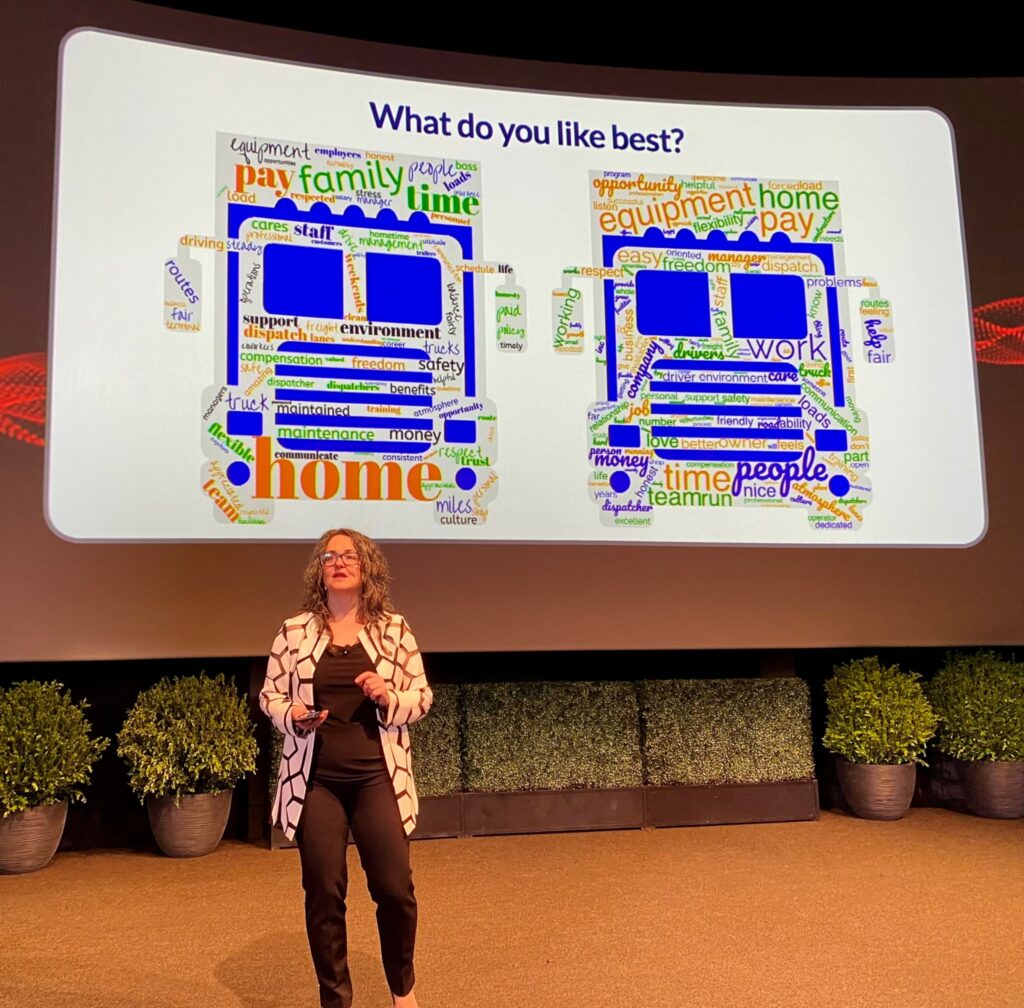Ruthless reflection helps best fleets improve
Ruthless reflection helps fleets improve their culture, attract and retain drivers. Changes cannot come about in a couple of months or even in a year.
“It may take two years of figuring out what you need to fix to get to the Top 20,” said Jane Jazrawy, CEO of CarriersEdge during the Best Fleets to Drive For Education & Awards Conference in Charlotte, N.C.
She likened a company to a living entity – a garden. The organization is pushed and pulled by the driving team, office staff, customers, management and sometimes investors. Like a garden, things sometimes grow when they’re not supposed to.

“When that happens, you can do some weeding or replanting. Make small corrections in your business, introduce new programs and ensure things are moving in the right direction,” Jazrawy said.
Small, incremental improvements can mould a company’s culture to be more driver centric. If a fleet doesn’t move forward, it can’t get better.
Jazrawy pointed out transformational change will affect trucking in the next 20 years. Mandates continue to be imposed, like electronic logging devices in the past and electrification in the future.
Breaking silos
“The fleets that will be ahead of the curve are going to be the ones who practice ruthless reflection and address the gaps they have in their organization,” she said.
She urged industry leaders to break down silos that will form in their organizations. As employees get comfortable, they build silos, she warned.
Jazrawy acknowledged participation for Best Fleets To Drive For was down this year, as it happens when the economy is down. But she was upbeat on the data mined from surveys.
What drivers want
Surveys showed the important things for company drivers were pay, home time, work family, equipment were important to company drivers. For owner operators, it was much of the same, except they were keen on the freedom to call the shots.
Drivers are also settling down with the implementation and use of technology. Not just the younger drivers, but the older ones as well. And as the industry embraces technology, it must pay attention to the threat of cyber criminals. As companies put plans and technology in place to fight them, training drivers on precautions is as important as training office staff.
While fleets ramp up use of social media to spread information, CarriersEdge found that drivers are not following their company’s social media feeds. “It’s all about Facebook,” Jazrawy said. “A lot of them didn’t like Facebook and deleted the app.”
Social media woes
Fleets might want to check with their drivers if they are subscribed to or are following the company on apps like Facebook, Instagram and TikTok. “Fleets use social media to attract talent, but some don’t think about the existing drivers,” she said. “If they aren’t engaging, they’re on social media, they’re just not following your page.”
As the driver pool gets older, retirement and how to fund it is on drivers’ minds. There is a lot of anxiety about pay in the current economic situation and some are postponing retirement. Some fleet offer retirement savings plans but drivers may not participate. Fleets can help by educating drivers on how to invest for their retirement.
Safe space to work
Jazrawy noted that the number of LGBTIQA+ individuals in the industry is increasing.
Trucking is a great place for people who want to live their lives on their terms. Fleets that offer safety to all drivers will help attract more talent.
Along with training comes performance feedback, and here is where human interaction is important. Some companies rely on emailing scorecards to drivers. Scorecards are important, but this can be delivered by a person who can also answer questions and provide feedback.
Communication is also key, especially when information about routing and dispatch. Everyone complains about it, but once the reasoning is explained, drivers are more understanding of the situation. Fleets must control the narrative with improved communication.
Have your say
This is a moderated forum. Comments will no longer be published unless they are accompanied by a first and last name and a verifiable email address. (Today's Trucking will not publish or share the email address.) Profane language and content deemed to be libelous, racist, or threatening in nature will not be published under any circumstances.